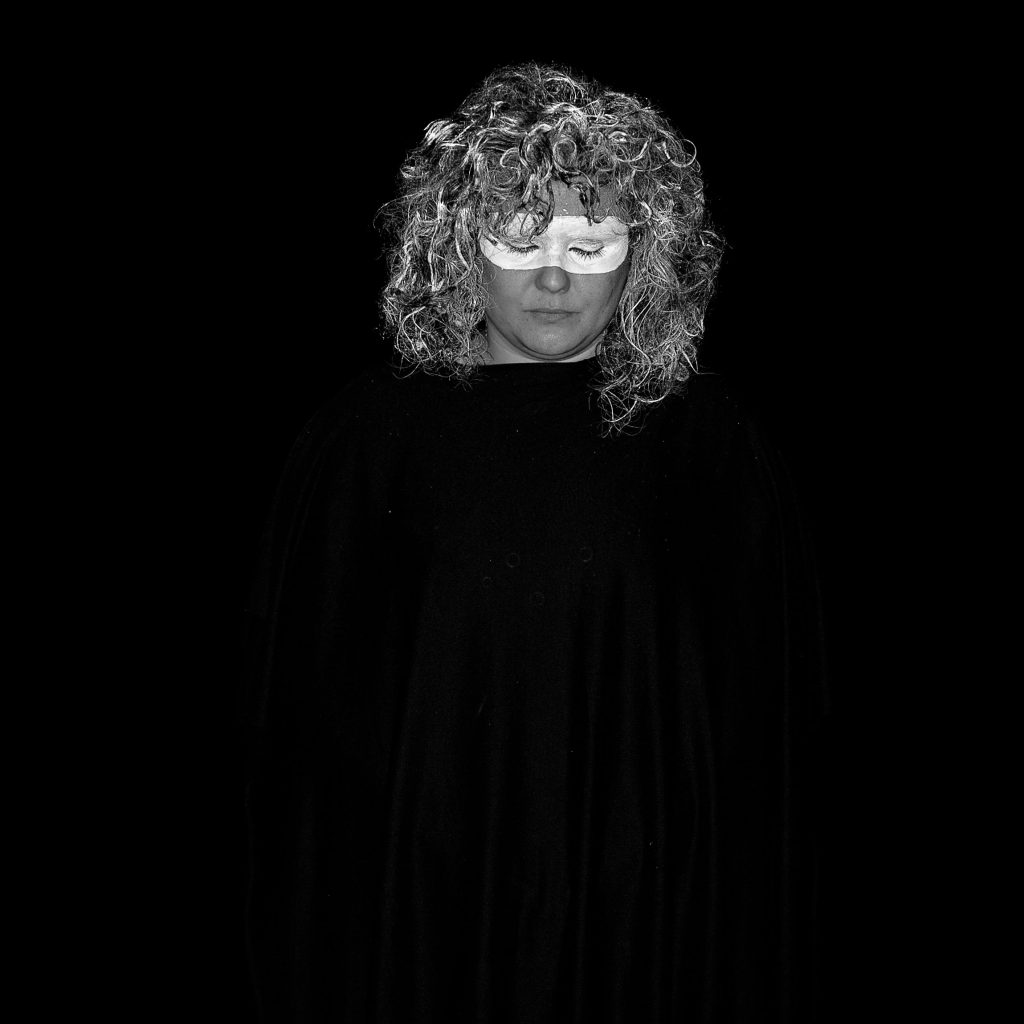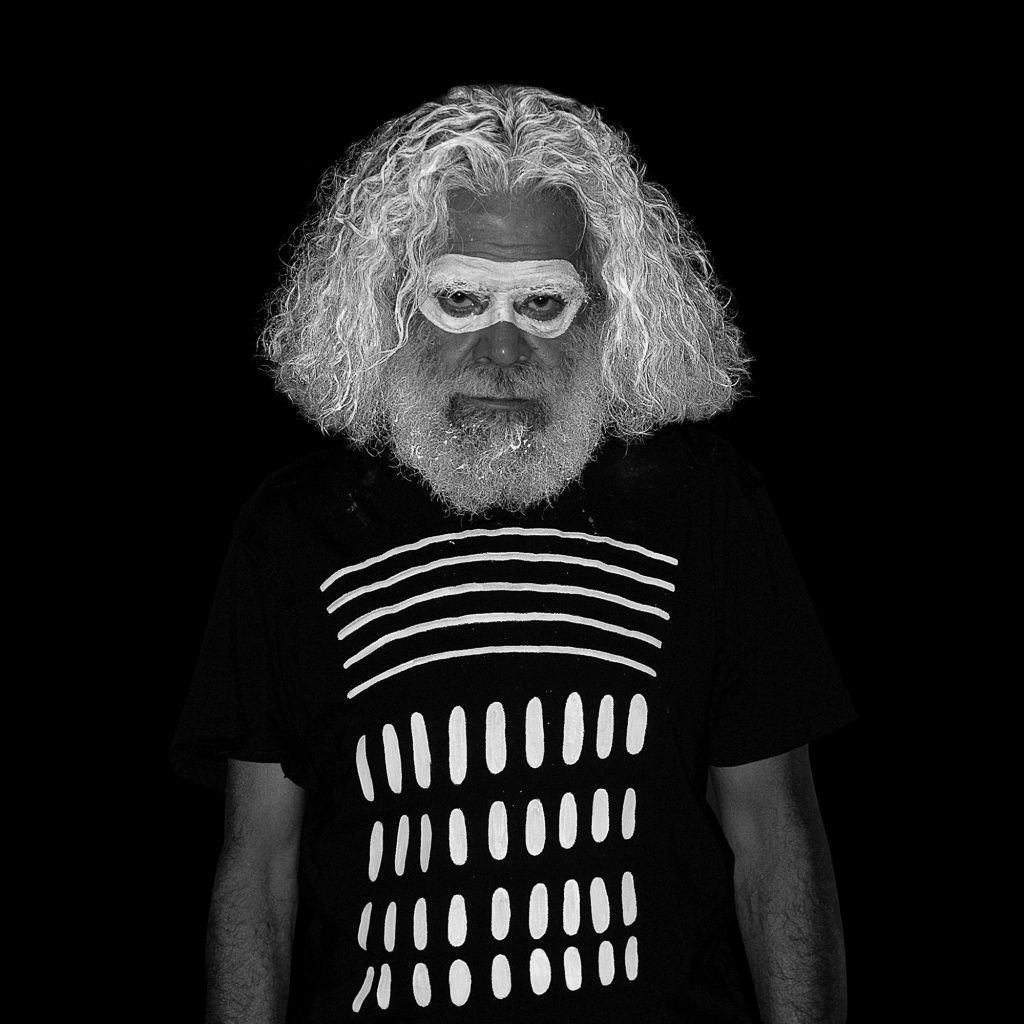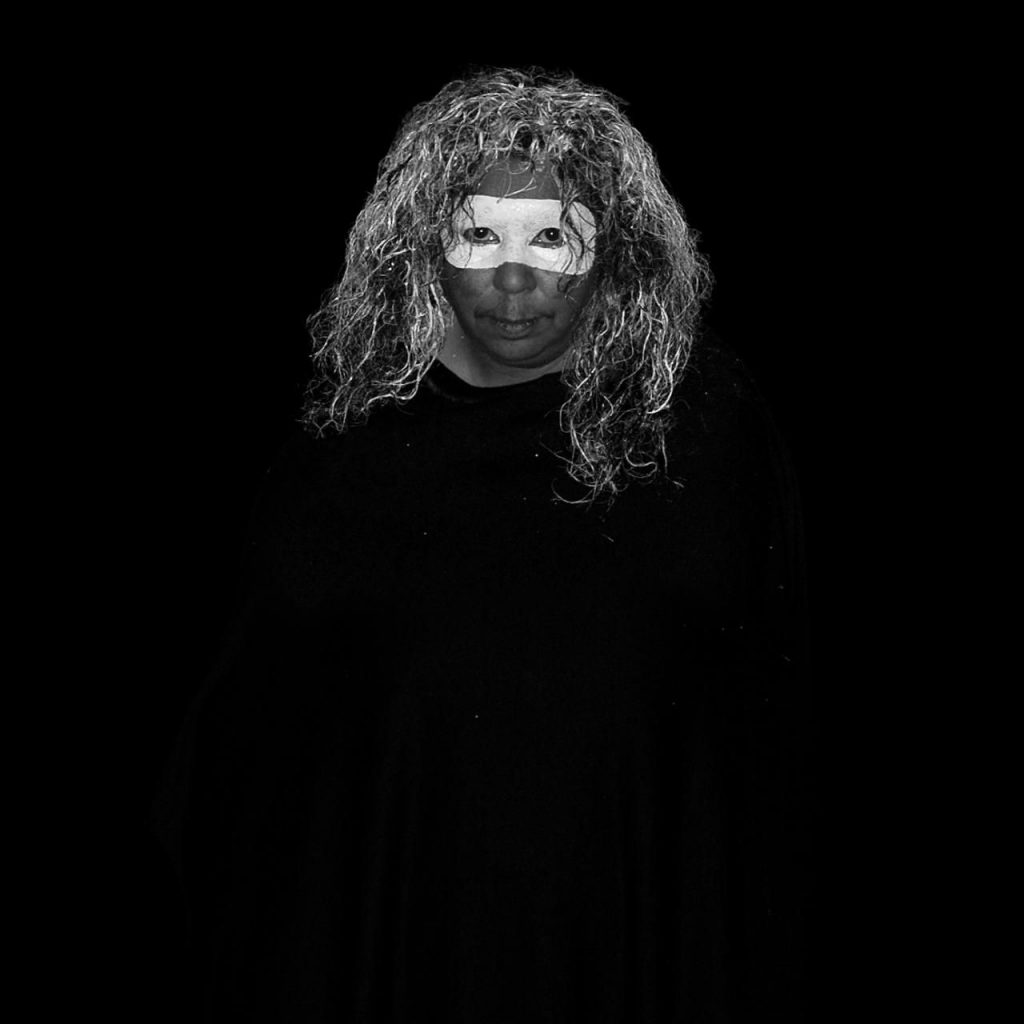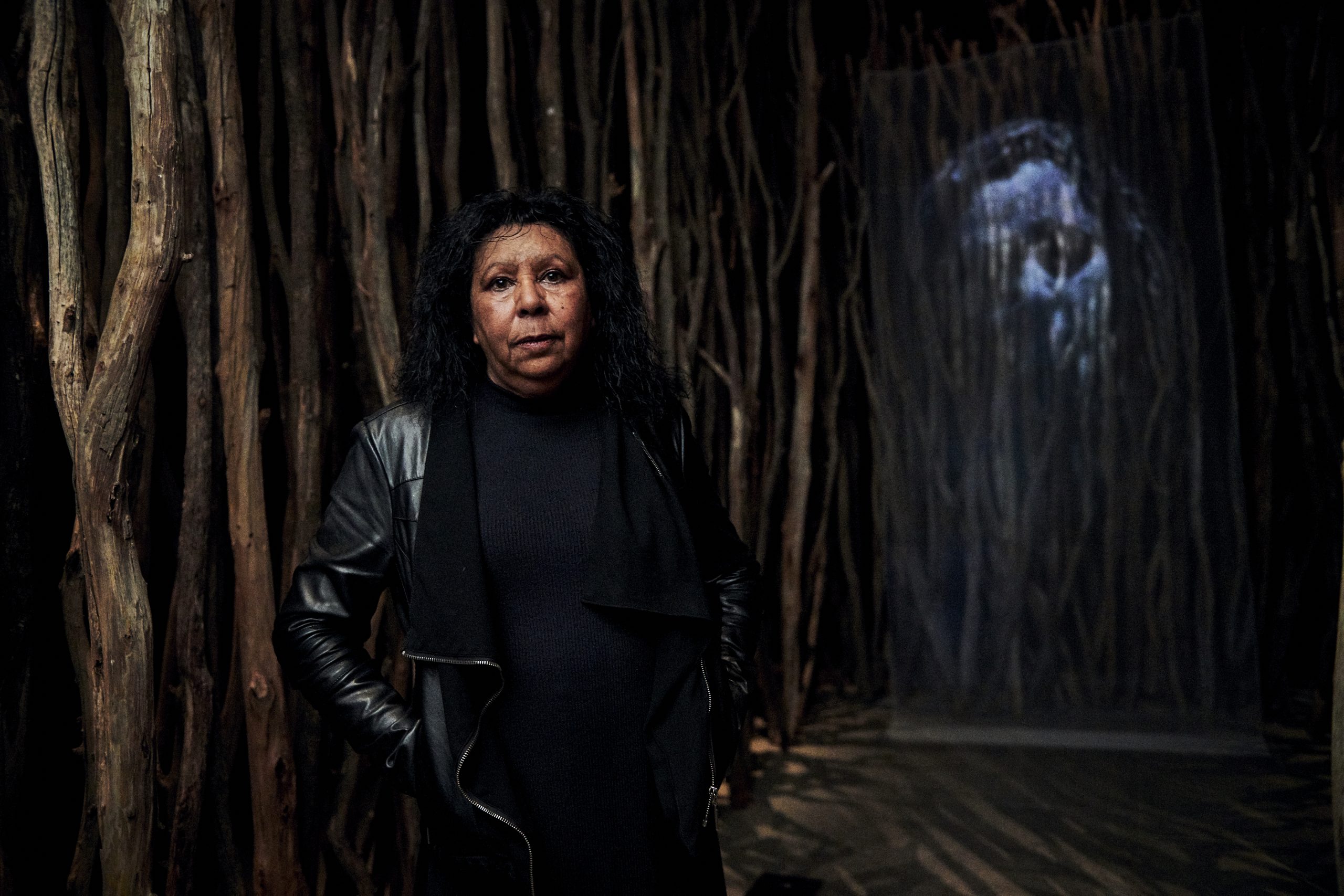


Loin des œuvres multicolores des Aborigènes qui viennent jusqu’à nous, l’ambassade d’Australie à Paris nous donne à voir une série de portraits en noir et blanc des premiers habitants de l’île-continent. Ils sont signés Maree Clarke.

Les noirs sont très noirs, les blancs sont très blancs. Peu de nuances de gris ou à peine pour cette série de portraits d’Aborigènes d’Australie. Ces 84 images montrent face camera 38 femmes et 46 hommes masqués d’ocre blanc. Les hommes portent des t-shirts noirs peints de motifs blancs rappelant des dessins de scarification. Le noir que portent les femmes n’offre aucune marque distinctive. Ainsi, leur tenue, leur corps se confondent avec le fond de l’image. Les cheveux de tous sont saupoudrés du même ocre, qui les rend comme phosphorescents. C’est impressionnant. Dans cet espace qui constitue le lieu de l’exposition, posés ici et là entre les cimaises, les seuls points de couleur (ocre brûlé ou blanc) sont des kopi. Les kopi sont des casques crâniens appartenant à ceux que nous découvrons. Traditionnellement fabriqués à partir de gypse, ces couvre-chefs étaient portés par les femmes pour de longues période de deuil puis déposés sur la tombe des défunts.
Nous parcourons donc la galerie toisé par ces 84 regards qui nous scrutent. Où sommes-nous ? En Australie, dans le Victoria et le sud-est du pays et nous entrons dans la mémoire de peuples que nous ne connaissons pas.
L’une d’entre eux
Maree Clarke est une femme Mutti Mutti, Wamba Wamba, Yorta Yorta, Boonwurrung. Ce sont les noms des peuples qui lui ont donné naissance. Dans son travail d’artiste, elle explore la mémoire, l’oubli, la mort des siens et les rituels qui accompagnent cette double fin. En fait, les photos que nous voyons ici constituent un fragment de Mémoires Ancestrales (Ancestral Memories) exposée en 2021 à la National Gallery of Victoria. Trente ans du travail de l’artiste y étaient présentés; trente années de réflexion et de combats contre la colonisation et ses effets sur l’intégrité de ses peuples… Dans la version intégrale, Maree Clarke puise sa réponse dans d’autres médias que la photographie : bijouterie, vidéo, travail du verre, hologramme, etc. C’est une artiste pluridisciplinaire dont un seul des arts est révélé au public parisien.
Mais il faut aller voir ces images coincées, au rez-de-chaussée de l’ambassade, entre la tour Eiffel et la Seine. Les lieux sont habités. Puis, continuez votre exploration à un jet de pierre de là. Au musée du quai Branly.
Légendes
haut : Portrait of Maree Clarke, artist and designer in Maree Clarke Ancestral Memories at The Ian Potter Centre NGV Australia, Melbourne from 25 june – 3 october 2021 © Eugene Hyland
image centre : Maree Clarke Mutti Mutti/Wamba Wamba/Yorta Yorta/Boonwurrung born 1961
Jack Charles 2012; printed 2018 inkjet print (58 × 58 cm) (image) (70 × 70 cm) (sheet) National Gallery of Victoria, Melbourne
Purchased, Victorian Foundation for Living Australian Artists, 2018 © Maree Clarke
image droite : Marre Clarke Mutti Mutti/Wamba Wamba/Yorta Yorta/Boonwurrung born 1961
Maree Clarke 2012; printed 2018 Inkjet print(58 × 58 cm) (image) (70 × 70 cm) (sheet). Ed 1/10 National Gallery of Victoria, Melbourne
Purchased, Victorian Foundation for Living Australian Artists, 2018 © Maree Clarke
S’y rendre
Ambassade d’Australie
4 rue Jean-Rey – 75015 Paris.
Gratuit. Pièce d’identité obligatoire. Jusqu’au 17 mars 2023.
Pour en savoir plus sur le travail de Maree Clarke, voir ici (en anglais).
Visite virtuelle de Ancestral Memories exposée à la National Gallery of Victoria.

Maree Clarke : Ritual and Ceremony
Far from the multicoloured works of the Aborigines that come to us, the Australian Embassy in Paris is showing a series of black and white portraits of the first inhabitants of the island-continent. They are signed Maree Clarke.
The blacks are very black, the whites very white. There are few, if any, shades of grey in this series of portraits of Australian Aborigines. These 84 images show 38 women and 46 men facing the camera, masked in white ochre. The men wear black T-shirts painted with white patterns reminiscent of scarification designs. The black worn by the women offers no distinctive markings. Thus, their clothes and bodies blend in with the background of the image. Everyone’s hair is sprinkled with the same ochre, which makes it seem to glow. It is impressive. In this space, which is the exhibition space, the only points of colour (burnt ochre or white) are kopi. The kopi are mourning caps belonging to those we are discovering. Traditionally made from gypsum, these headgear were worn by women for long periods of mourning and then placed on the graves of the deceased.
So we walk through the gallery, scrutinised by these 84 looks. Where are we? In Australia, in Victoria and the south-east of the country, we enter the memory of peoples we do not know.
One of them
Maree Clarke is a Mutti Mutti, Wamba Wamba, Yorta Yorta, Boonwurrung woman. These are tribes who gave birth to her. In her work as an artist, she explores memory, forgetting, the death of her people and the rituals that accompany this double end. In fact, the photographs we see here are a fragment of Ancestral Memories, which will be exhibited in 2021 at the National Gallery of Victoria. Thirty years of the artist’s work were presented there; thirty years of reflection and struggle against colonisation and its effects on the integrity of its peoples… In the full version, Maree Clarke draws her response from other media than photography: jewellery, video, glass work, holograms, etc. She is a multidisciplinary artist, and her work is not limited to photography. She is a multi-disciplinary artist, and only one of her arts is revealed to the Parisian public.
But you have to go and see these images stuck, on the ground floor of the embassy, between the Eiffel Tower and the Seine. The place is inhabited. Then continue your exploration a stone’s throw away. At the Quai Branly Museum.


